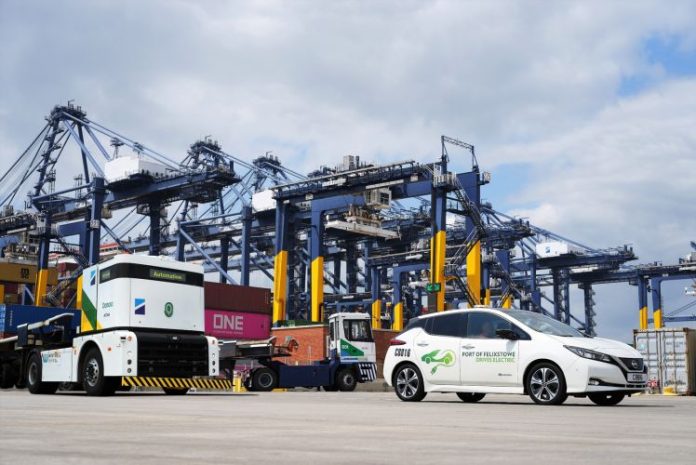Hutchison Ports has set an aim of achieving net-zero emissions for its three ports in the United Kingdom, Port of Felixstowe, Harwich International, and London Thamesport, by 2035.
On 20 May, the Port of Felixstowe turned on two new 11Kv high voltage substations to support the charging infrastructure for its conventional electric tractor fleet. Each substation will allow 20 vehicles to be charged at the port’s Trinity Terminal at the same time.
The port will get its second batch of 22 electric tractors in July 2023, followed by another 24 vehicles in November 2023.
Furthermore, the UK port has debuted its first battery-powered autonomous vehicles, which will be equipped with the most recent battery-swapping technology. It intends to purchase 150 electric tractors during the next two years.
To tackle Scope 2 emissions and ensure that sustainable electricity is used to power port equipment, the Port of Felixstowe signed a new deal in April which ensures that all the electricity it uses is certified as being generated by solar, offshore wind or other renewable sources.
“Historically there was no option but to use fossil fuels to power the majority of port equipment. We have made significant progress at the Port of Felixstowe converting our yard cranes to electricity and now have 50 electric cranes with another 17 on order for delivery this year. All new equipment across our three UK ports will be sustainable and we have a programme to replace our entire vehicle fleet with battery-powered or alternative fuel options by 2033,” explained Clemence Cheng, executive director of Hutchison Ports and managing director of Hutchison Ports Europe.







